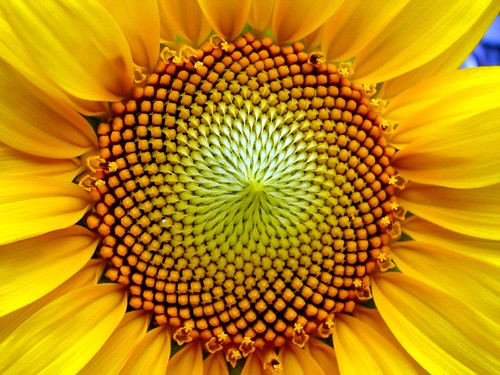Here we are at Lammas, the Gateway into Fall yet we still have the august heat of Indian Summer awaiting us, to ripen our fall crops.
What are you thankful for this harvest season?
Count your blessings.
Celtic Festival of the First Fruits and Ripening Corn

"In August the land grew dusty and dry. Petals fell from the roses, pink and yellow, crimson and white. Thick like a carpet they lay on the lawns and paths, and the poppies were seed heads now. The moors were tinged with purple heather and the cornfields had ripened to an overall gold. Dusk fell earlier with the approaching Autumn and Owen felt a touch of sadness, as if something was drawing to a close. There was a feeling of lateness in the minty evenings. He could smell the coming of dewfall and frost..." Louise Lawrence

Lammas is the seasonal peak of high summer, and the gateway into autumn. And as with all cross-quarter festivals it is the point when we must respond to the changes which are coming. The grain harvest is being gathered in, representing for us both the food which will sustain us throughout the winter, and the seed which will grow again in the spring to bring next year's harvest.
It is a time to give thanks for the active growth period as the sun's energy begins to wane. We turn once again to face our inner selves, assimilating and understanding on deeper levels what we have within.
Lugh is the Sun King or Corn King who dies with the waning year. He symbolizes for all of us the sacrifice of our outer energy and an opportunity to journey within. This brings regeneration and the ripening of our seeds in the dark of the year.

The first sheaf of wheat is ceremonially reaped, threshed, milled and baked into a loaf. The grain dies so that the people might live. Eating this bread, the bread of the Gods, gives us life. If all this sounds vaguely Christian, it is. In the sacrament of Communion, bread is blessed, becomes the body of God and is eaten to nourish the faithful.
This Christian Mystery echoes the pagan Mystery of the Grain God.

Grain has always been associated with Gods who are killed and dismembered and then resurrected from the Underworld by the Goddess-Gods.
The story of Demeter and Persephone
is a story about the cycle of death and rebirth associated with grain. Demeter is a fertility Goddess. Ceres/Demeter is the Increaser, the Mother Aspect of the triple Goddess. She who is the seed, the womb and the soil, the preserver of life, regenerative power. Demeter the Corn Mother represents the ripe corn of the year's harvest and her daughter Persephone represents the grain seed who lives in the dark throughout the winter and re-appears in the spring as new growth. Through rest, sleep and time in the dark, we are made new.

This is a fun project to do with kids. Take dried-out corn husks or other cereal crops and tie them together in the shape of a woman. This is your visual representation of the harvest. As you work on her, think about what you harvested this year.

The corn dolly is an ancient harvest custom, still widely practiced throughout Europe. In ancient Europe it was customary at harvest time to leave a small portion of the grain in the field, often twisted or tied into the shape of a man or the symbol of a god or goddess.
This bundle or effigy
(immortalized in Burns’ ballad of John Barleycorn) http://youtu.be/7bcYeP8Kk8k was believed to contain the essence of the spirit of the grains, a representation of the solar deity who would be burned and ‘reborn’ as the spring grain. At the end of the season (usually at the winter solstice), the bundle would be ritually sacrificed, burnt, or plowed under to ensure the year’s crops.
In later times, corn dollies evolved into a household tradition, with elaborate symbolic figures crafted from straw, which were usually hung over doors or in barns and burnt at Christmastime.
  Decorate your table or altar with corn and grasses. If you have no corn, then bake a loaf of bread and plait it to represent the weaving of the summer energies and birthing.
Light golden or dark red candles on your table to represent the waning sun. Bring in a bowl of raspberries or wild strawberries.....the colour scheme should be yellows, golds and reds.
 
It is a form of thanksgiving.
Another way of looking at it is natural selection: we give back the seeds of the first and best of our harvest so that we may have more of the same next year.
Of course, while we do conduct these rituals we are not agrarian people. If you’re a city slicker you have to concentrate on the real meaning of harvest and sacrifice.
Throughout the year, starting at Winter Solstice, when the Sun began its ascent anew, we dreamed about and eventually cultivated ideas, projects and transformations to help grow and develop ourselves.
Finding ourselves at varying levels of success come harvest time, Lammas presents us with an opportunity to give thanks for that success.
By the waning part of summer, we’ve been working on our different projects and gardens at full tilt for several months. In the hot, active, yang season it’s easy to become wrapped up in our activities and seduced by our triumphs. But it’s also a strange time; we must acknowledge that there is still much work to do -- as much as these still long yet shrinking days will allow us -- while simultaneously discerning the destination on the horizon, which is a withdrawal back into the ground, back into ourselves. Rest is coming: sweet, deep sleep and dreams of new ways to grow. "
(Herbis Orbis)
 |

